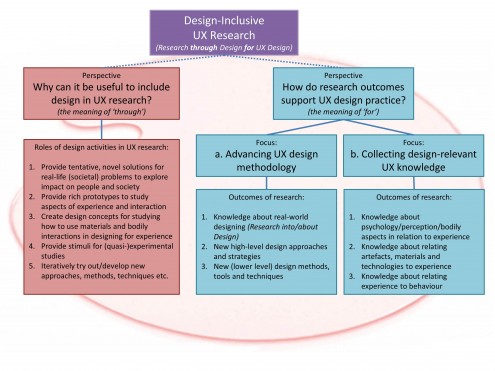The article about roles design can play in UX research, as well as about what types of outcomes can be expected from it, based on interviews with 41 design researchers at IDE/TU Delft, Aalto University (Helsinki) and Mobile Life Centre (Stockholm) has now appeared online at the website of the journal Behaviour & Information Technology. It was co-authored with Virpi Roto and Kaisa Väänänen.
Abstract: Since the third wave in human–computer interaction (HCI), research on user experience (UX) has gained momentum within the HCI community. The focus has shifted from systematic usability requirements and measures towards guidance on designing for experiences. This is a big change, since design has traditionally not played a large role in HCI research. Yet, the literature addressing this shift in focus is very limited. We believe that the field of UX research can learn from a field where design and experiential aspects have always been important: design research. In this article, we discuss why design is needed in UX research and how research that includes design as a part of research can support and advance UX design practice. We do this by investigating types of design-inclusive UX research and by learning from real-life cases of UX-related design research. We report the results of an interview study with 41 researchers in three academic research units where design research meets UX research. Based on our interview findings, and building on existing literature, we describe the different roles design can play in research projects. We also report how design research results can inform designing for experience methodologically or by providing new knowledge on UX. The results are presented in a structured palette that can help UX researchers reflect and focus more on design in their research projects, thereby tackling experience design challenges in their own research.
The full paper can be found here.





